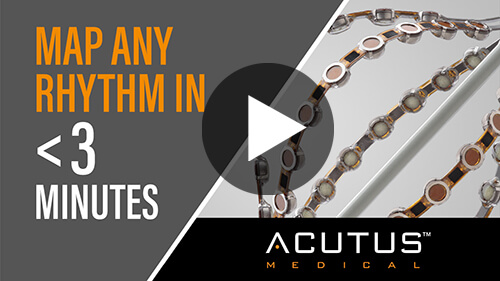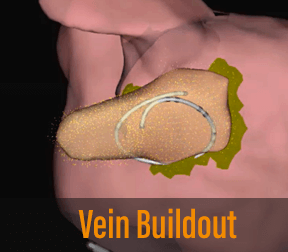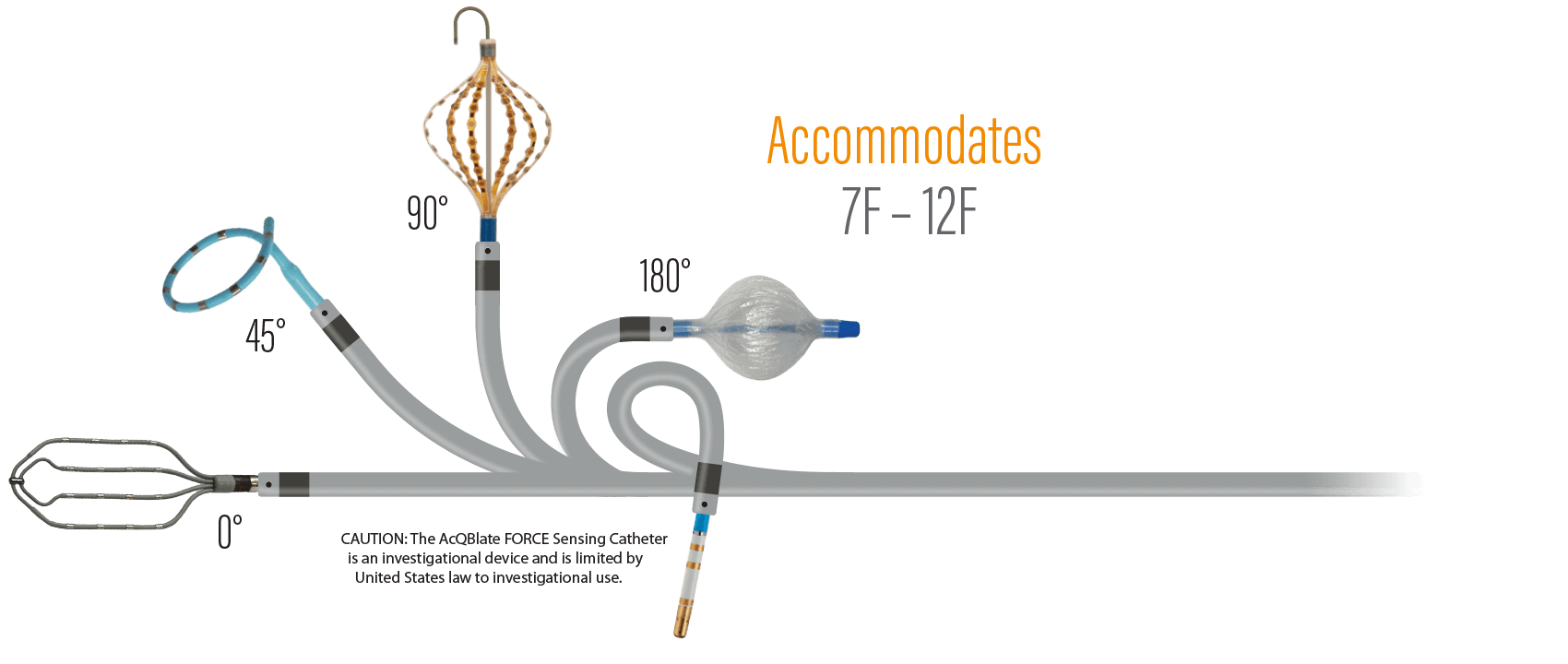The Singular Solution in EP
Acutus Medical Technology

Image.
Using ultrasound, doctors can acquire more than 115,000 points every minute. This scan can be performed in minutes and allows for static views of the anatomy.
Visualize.
Real-time noncontact mapping provides a global chamber view of endocardial activation for the first time. EPs can see electrical activation of the entire chamber as it happens – something never before possible.
Identify.
Thanks to our real-time view, doctors are able to identify locations causing the arrhythmia and plan the best course of action.
Ablate.
With a clear view, precise ablation – specific to each patient’s electrical heart function – can occur. No more generalized anatomical ablations that may or may not affect a patient’s arrhythmia.
Confirm.
Thanks to real-time, beat-by-beat updates, physicians can confirm each ablation produced the desired outcome – giving doctors high confidence that the treatment will help their patient.
Leading the Charge in the EP Revolution Clinical Efficacy and Procedural Efficiency
AcQMap® High Resolution Imaging + Mapping System
Clear and consistent ultra high resolution maps deliver a personalized treatment approach for superior clinical outcomes


Ultra High Resolution Imaging and Mapping System
- Delivers individualized ablation strategies through real-time arrhythmia visualization
- Multiple mapping modes in one system: Non-contact, SuperMap and Contact
- Open platform compatible with a wide range of diagnostic and therapeutic tools
AcQMap® 3D Imaging + Mapping Catheter
Complete information, better analysis, increased confidence
Full chamber, real-time, ultra high resolution anatomy reconstruction


Full chamber, real-time, ultra high resolution anatomy reconstruction
- Acquisition of up to 115,000 ultrasound data points per minute for anatomy reconstruction
- Collection of up to 150,000 biopotential samples per second
- Ease of maneuverability using the AcQGuide® MAX Steerable Sheath
- Empty
AcQMap® Patient Electrode Kit
Precision manufactured for precision orientation
Engineered specifically for the AcQMap Imaging and Mapping System


Precision Manufactured for Precision Orientation
Engineered specifically for the AcQMap Imaging and Mapping System
- Assurance in catheter localization and confidence in navigation
- Place patches with ease using color coded image of the torso
- Durable application with enhanced adhesion and flexibility
Prior to using these devices, please review the Instructions for Use for a complete listing of indications, contraindications, warnings, precautions, potential adverse events, and directions for use.
Map Any Rhythm in < 3 Minutes Unprecedented Speed and Fidelity
Single Position Non-contact Mapping Chaotic rhythms
Provides high resolution, non-contact, full chamber maps of every beat in stable and unstable rhythm patterns

SuperMap™ Stable and slightly variable repetitive rhythms
Enables mapping of stable, repetitive rhythms with high accuracy in < 3 minutes

Contact Mapping Stable, repetitive rhythms
Multipoint electroanatomic mapping for simple arrhythmias


Prior to using these devices, please review the Instructions for Use for a complete listing of indications, contraindications, warnings, precautions, potential adverse events, and directions for use.
Mapping Analysis Tools Confidently Assess Global Conduction and Rapidly Determine Regions of Interest
AcQTrack™
The AcQTrack analysis tool automatically identifies three abnormal conduction patterns that may be drivers and/or maintainers of complex arrhythmias such as AF.
AcQTrack fits seamlessly into electrophysiologists’ workflows to aid in their visual assessment of complex atrial arrhythmias and help to determine potential areas of interest in a personalized treatment approach.

AcQTrack automatically detects three different types of activity: Irregular (yellow); Partial Rotation (green); and Focal (purple)
SlowZone™ Locator
The SlowZone analysis tool represents a pioneering advancement in substrate mapping. It is the first and only mapping algorithm that identifies consistent areas of slow conduction over the entire atrium.
With SlowZone, physicians create one or more maps which the tool then combines into one composite map for analyzing areas of consistent slowing which enables an individualized diagnosis and treatment for each patient.

SlowZone example: Five maps combine into one composite showing areas of consistent slow conduction
Taking You Precisely Where You Need to Go
AcQGuide® MAX Steerable Sheath
The Simple Solution for Superior Steering and Handling of 7F to 12F Catheters
Enhanced maneuverability



Industry-best steerable sheath deflection
- Enhanced maneuverability of the AcQMap 3D Imaging & Mapping Catheter
- Smooth transition for vasculature introduction and septal crossing with atraumatic tip
- Braided shaft provides improved torque response, stability, and control
AcQCross™ Integrated Transseptal Dilator/Needle
Exchange Less – Reposition with Ease
The AcQCross product portfolio is owned and distributed by Medtronic. The AcQCross Max 70 product, designed to work with the AcQGuide Max 2.0 sheath, is distributed by Acutus Medical.


First Transseptal Access System approved for Mechanical or RF Puncture
- Designed for patient safety and crafted for physician confidence
- Meticulously engineered to address every crossing challenge
- Provides – in one package – the safest, smoothest, most confident transseptal access in the industry
- Tailored to minimize steps and reduce exchanges
AcQRef® Introducer Sheath
Stable and Reliable Reference
Unipolar Pacing and Recording for VT Diagnosis


Unipolar Pacing and Recording for VT Diagnosis
- Dual-purpose unipolar reference & introducer
- Provides a stable electrical reference when required
- Eliminate the need for a second groin access site
Prior to using these devices, please review the Instructions for Use for a complete listing of indications, contraindications, warnings, precautions, potential adverse events, and directions for use.
Revolution, not Evolution
What is Charge Density Mapping?
The ability to view a clear picture of the heart’s electrical activity in real-time is the distinguishing characteristic of the AcQMap System. With other systems, only voltage readings have been used, resulting in a broad, blended view of cardiac activity.
The AcQMap System minimizes the broad field effect of voltage with multiple points-of-view and proprietary algorithms to calculate charge density. Electrical activation is displayed as a charge density map on a 3D ultrasound-reconstructed surface anatomy. By displaying only the charge density readings without the surrounding sources, the field of view becomes sharper and narrower.




































